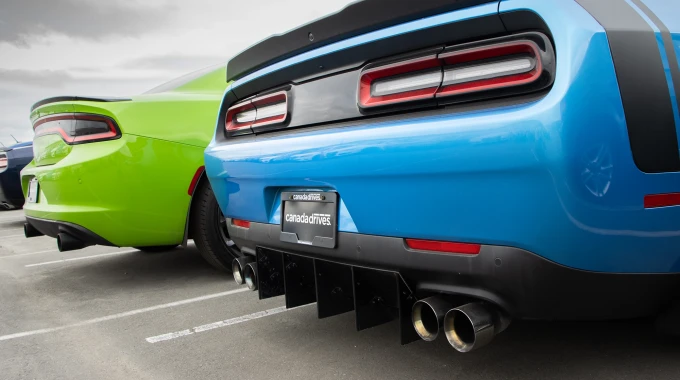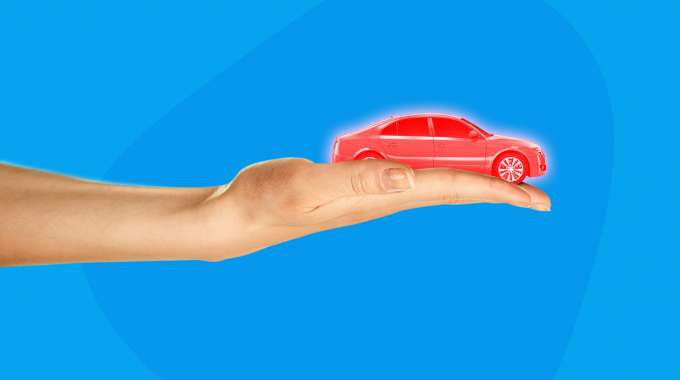
GAP Insurance Explained: How Does it Work & Who is it For?
Of all the extra-cost add-ons that can be tacked on to your vehicle purchase, GAP insurance is one of the most sensible. But how does it work exactly, who is this really for, and are the extra payments worth it for all car owners? We explain, plus answer several other frequently asked GAP insurance questions.
The process of buying a car comes with a lot of concerns, question marks, and considerations—and that’s before you go shopping for insurance.
Once you’ve decided on a new vehicle, the process of insuring it can be equally as daunting, thanks to a long list of terminologies, buzz-words and definitions to understand. One of these is “gap insurance”, a form of add-on coverage typically offered at purchase by the dealership, or financing operation.
Below, we’ll cover the ins and outs of GAP insurance to help you understand what it is, what it does, and ultimately, to help you make a better purchase decision for your insurance coverage.
What exactly is GAP insurance & who is it for?
GAP insurance is a form of insurance that protects customers from financial loss due to several specific circumstances. The term itself stands for Guaranteed Auto Protection (GAP) or Guaranteed Asset Protection, and its job is to protect you from having to pay out of pocket if your vehicle is totalled or stolen while you owe more than the vehicle is worth.
This form of add-on coverage is intended for customers who want additional purchase confidence, reduced risk of financial loss, and virtually anybody buying or financing a brand new car.
Everyone’s risk tolerance is different, though shoppers after the most confident and worry-free ownership experience possible tend to gravitate towards GAP insurance, which is typically offered at the time of purchase as a one-time charge that can be rolled into your monthly payments.
There’s a lot going on when you take delivery of your new vehicle, so understanding the ins and outs of GAP insurance before that phase of the purchase process is beneficial.
GAP insurance is worthy of consideration by shoppers leasing or financing a vehicle, shoppers making a small down payment (if at all), and shoppers of pricier vehicles that will depreciate quickly.
It’s particularly attractive to shoppers opting for long-term loans, which are increasingly popular. If you’ll have a loan term of 60 months or more, GAP insurance makes even more sense since you’re carrying a balance on your loan for a longer period of time.
As a rule of thumb, GAP insurance becomes more enticing for shoppers who are leasing, who are putting little to no money down, and who are opting for lengthier loan and lease terms.
How does guaranteed auto protection (GAP) work?
To understand how GAP insurance works, it’s important to understand the difference between the purchase price of a vehicle, and its depreciated value.
The average transaction price of a new vehicle in Canada is around $45,000. After paying $45,000 for a new Ford Ranger or Toyota Venza, depreciation begins as soon as the vehicle is plated and put on the road.
Generally, the value of a new car or crossover drops by 15-20 percent right off the hop—meaning your $45,000 purchase is worth about $7,875 less than its purchase price in quick order. Your $45,000 vehicle depreciates further with every passing day on the calendar, and every mile added to its odometer.
When you’re done with your new car after some months or years, you’ll sell it or trade it in for its depreciated or ‘residual’ value, perhaps $20,000.
To sum up, as soon as you pay the purchase price of your new vehicle, that vehicle begins to depreciate to its depreciated or residual value, moreso with each passing day and mile driven. We discuss this more in our article Residual Value Explained & How to Calculate It. Plus, we share five simple tips to help boost your vehicle’s value here.
Here’s where GAP insurance comes in. Basically, its job is to protect customers from having to pay the difference between the purchase price and the depreciated value out of pocket if the vehicle is totalled or stolen.
Example of how GAP insurance works
Let’s say you buy a new BMW for $60,000.
After 8 months and 15,000 kilometres of driving, the vehicle’s depreciated value is $52,000.
Unfortunately, your new BMW gets stolen (or totalled and written-off).
Now, you’ll have to notify your insurance company. They’ll cover the depreciated value of the vehicle, not its purchase price—leaving you on the hook for the difference of $8,000.
Without GAP insurance, you’re still responsible for a $60,000 loan (or equivalent lease payments), though your insurance only covers $52,000 of that total. The remaining $8,000? You’re left to continue making those payments on your lease or financing for the vehicle you no longer own– unless you’ve got GAP insurance.
This situation is exactly why GAP insurance exists. With it, the additional coverage backs you up, protecting you from the $8,000 hit in this example.
Owing more than your vehicle is worth is sometimes called being ‘upside down’.
Note that GAP insurance in the used market is usually matched to the financing term, so if you’re financing for 60 months, your GAP policy would be matched to 60 months as well.
Is buying GAP insurance really worth it? How much does it typically cost?
Of all the extra-cost add-ons that can be tacked on to your new vehicle purchase, GAP insurance is one of the most sensible. Many variables are at play, but GAP insurance generally costs between $300 and $1,000 depending on the make, model, and purchase price.
Rolled into the payments of a 60-month loan, the added cost of GAP insurance might run you between 5 and 15 dollars a month, easily worth the investment for most shoppers given that it could save them thousands.
For some shoppers, the math alone justifies the minimal added expense. For others, it’s a small price to pay for a big boost to peace of mind and purchase confidence.
Assess your own risk tolerance, and ask for GAP insurance quotes from your dealership and insurance company before you finalize your purchase, noting that GAP insurance may make less sense on shorter-term payback options, and for used vehicles, which have already undertaken a depreciation hit.
Do you need GAP insurance on a lease?
No, but it can be highly advantageous.
Though not mandatory, GAP insurance on a leased vehicle offers a high level of financial protection if the vehicle is stolen or totalled, since you won’t suffer any surprise costs if your insurance payout doesn’t cover the remaining value of the vehicle.
Applying GAP insurance to a lease provides confidence that you won’t be charged extra to pay off the vehicle in the event that it’s stolen, or declared a total loss.
GAP insurance is ideal for many types of leases, but it’s not required.
Can GAP insurance be refunded?
It depends.
Before deciding whether or not to opt in to any available GAP insurance, be sure to ask for details about cancellation and refunds if you decide you don’t need the coverage.
Each provider is different. Some offer a full refund for customers who cancel within a short period of time, others may offer a prorated refund if shoppers cancel the insurance before the end of the term. Cancellation fees may apply.







